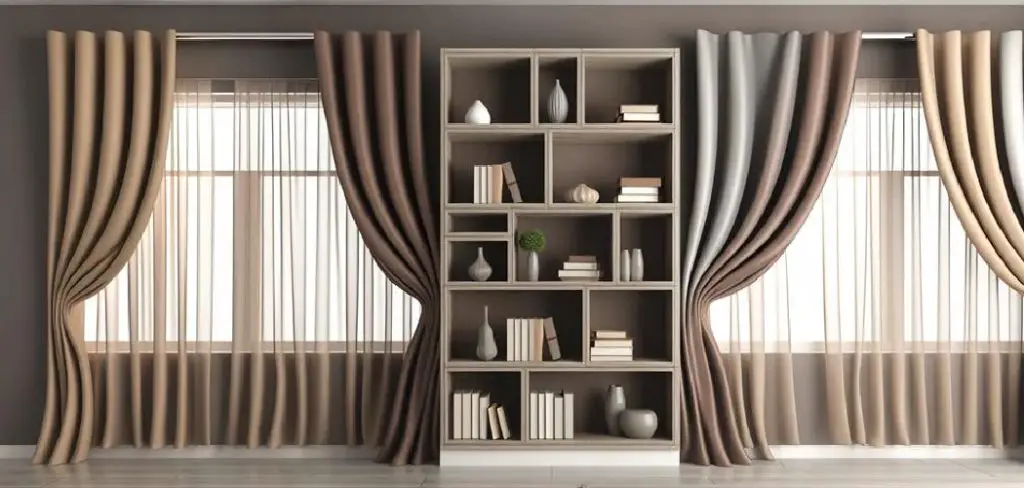Open shelving has become popular in modern homes for its aesthetic appeal and ability to create a sense of openness and accessibility in a space. However, despite these advantages, open shelves can present certain challenges. One of the primary issues is the visibility of clutter, as the lack of doors or coverings means that any mess is on full display.
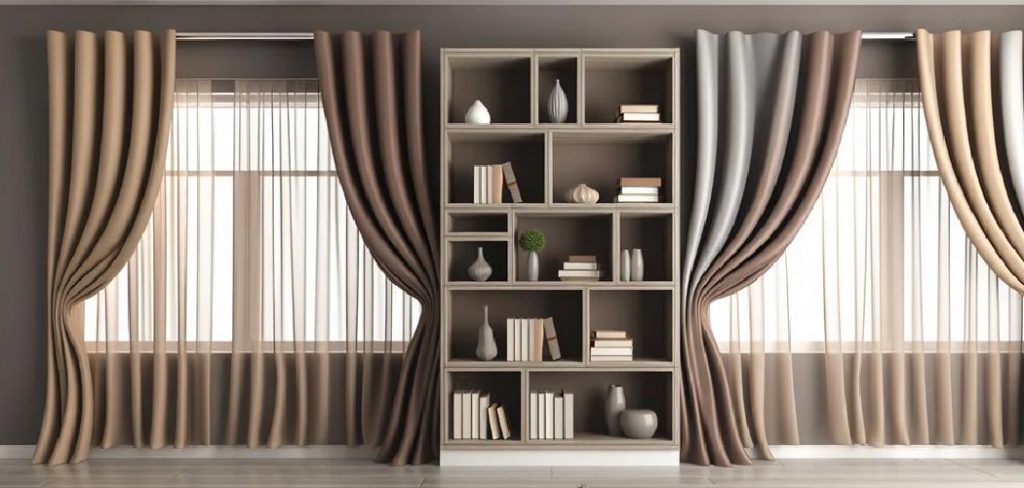
This can make the area look unorganized and chaotic. Additionally, open shelves tend to accumulate dust more quickly, requiring frequent cleaning. Homeowners who enjoy the style of open shelving but want to mitigate these challenges can explore various methods and creative solutions. From using decorative baskets and boxes to installing sliding doors or adding curtains, there are numerous ways to strategically address how to hide open shelves, ensuring they remain both functional and visually appealing.
Using Curtains or Fabric Panels
Choosing the Right Fabric:
When it comes to concealing open shelves with curtains or fabric panels, selecting the right fabric is crucial for both functionality and aesthetic compatibility. For kitchen or living spaces, consider using fabrics like cotton or linen, which are lightweight yet durable, providing an airy look while effectively hiding clutter.
For a more substantial solution, heavy-duty fabrics like canvas can add a touch of sophistication and offer greater coverage and privacy. When choosing colors and patterns, it’s essential to consider the room’s existing décor. Neutral tones in whites, creams, or grays can seamlessly blend with a variety of interior styles, while bold patterns or vibrant colors can make a statement and add character to the space. Matching or complementing existing furniture and wall colors will create a cohesive look that enhances the overall aesthetic.
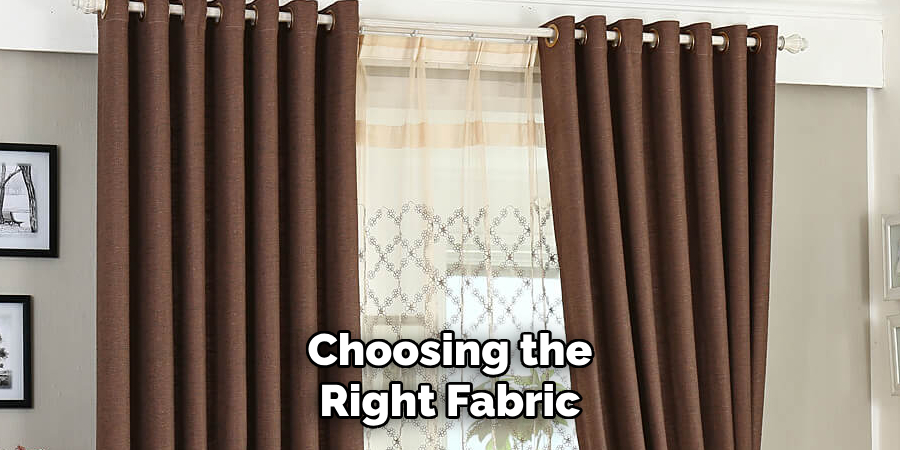
Installing Curtain Rods or Tracks:
Installing curtain rods or tracks is fundamental to the overall effectiveness of fabric panels. Start by measuring the width of your shelves to determine the appropriate length for your curtain rods or tracks. Ensure they extend slightly beyond the edges of the shelves for a polished look. Rods can be installed directly above the shelves, using brackets to secure them to the wall, or tracks can be mounted to the ceiling for a more seamless, modern appearance.
For ease of access and varied visual appeal, consider different hanging styles. Pleated curtains are tailored and sophisticated, while rod pocket panels provide an effortless, casual style. Tab top curtains are a versatile option, allowing easy removal for washing or an occasional change in style.
Maintaining Cleanliness:
Regular maintenance is necessary to keep fabric panels looking fresh and clean. Dust and cooking odors can easily cling to curtains, especially in kitchen spaces. Therefore, it is important to wash these panels regularly to prevent the accumulation of dust and potential odors. Opt for fabrics that are easy to hand wash or machine washable for convenience.
Following care instructions specific to the chosen fabric is also beneficial to preserve its texture and color. Lightweight fabrics require more frequent cleaning than heavier ones but tend to dry faster. With the right choice of material and regular upkeep, fabric panels can be both a functional and stylish solution to concealing open shelves while maintaining a clean, organized living area.
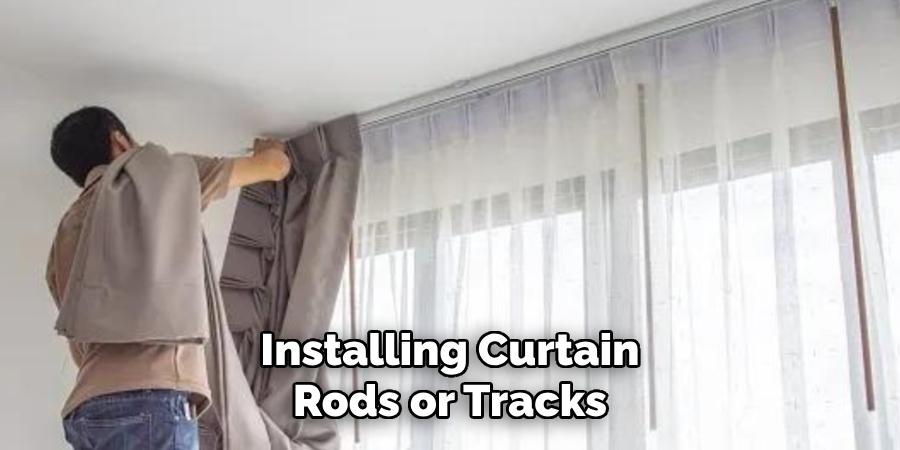
How to Hide Open Shelves: Adding Sliding Doors or Panels
Types of Sliding Doors:
When considering sliding doors for open shelves, the choice of material plays a critical role in determining the installation’s aesthetic appeal and longevity. Wood sliding doors, often made from solid hardwood or plywood, provide a warm, traditional look and can be stained or painted to match any décor. They offer excellent durability and versatility but may require regular maintenance to prevent warping or damage. Glass sliding doors, whether frosted, clear or tinted, lend a sleek and modern atmosphere to a room.
They allow for light diffusion into the shelves, partially obscuring the contents while maintaining a sense of openness. However, glass can be fragile and may require frequent cleaning to maintain clarity. Acrylic sliding doors offer a contemporary alternative in various textures and colors. They are lightweight and shatter-resistant, providing a durable, easy-to-maintain option. The main drawback is that acrylic can scratch more easily than other materials.
Installation Process:
Installing sliding doors on existing open shelves involves careful planning and precision. Begin by measuring the width and height of the shelves to determine the required size of the doors. Ensure these measurements are precise, as accurate sizing is crucial for smooth operation. The next step involves installing the tracks and rollers necessary for sliding door mechanisms. Choose hardware that complements the overall style of your space, whether opting for sleek metal tracks for a modern look or wooden tracks for a rustic feel.
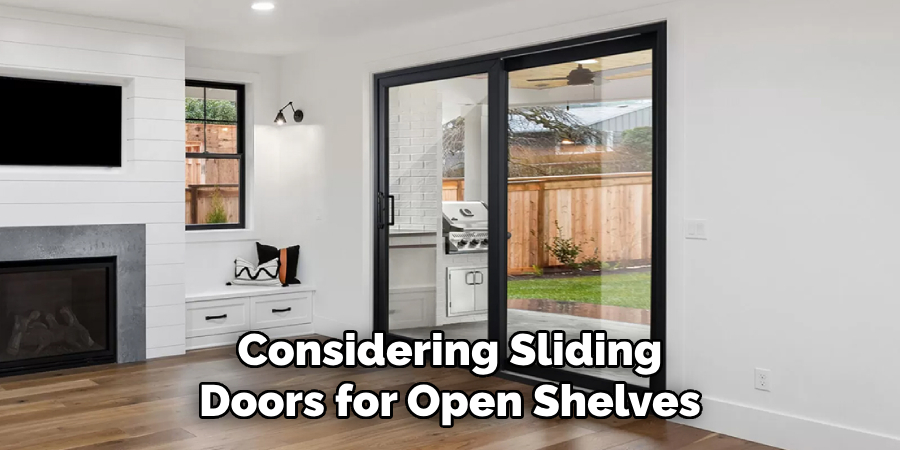
Start by securing the upper track to the top of the shelf unit, ensuring it is level using a spirit level. Follow with the installation of the lower track, which serves as a guide, aligning perfectly with the upper option. Once tracks are in place, attach the rollers to the doors and position them within the track system. Check the operation to ensure doors slide smoothly and make any necessary adjustments for optimal performance.
Custom Solutions:
For those seeking a more tailored approach, custom cabinetry solutions offer the ability to seamlessly integrate sliding doors into existing shelving structures. By working with a carpenter or a professional cabinetry firm, homeowners can design sliding panels that align perfectly with their storage needs and aesthetic preferences. Options such as built-in handles, soft-close mechanisms, and personalized finishes enhance both functionality and style.
Custom sliding doors can also incorporate design elements that reflect the homeowner’s personal taste, providing a cohesive look that complements the rest of the home’s interior design. This bespoke approach transforms open shelves into a hidden storage marvel and adds a touch of sophistication and uniqueness to the living space.
How to Hide Open Shelves: Incorporating Decorative Boxes and Baskets
Choosing the Right Storage Solutions:
Decorative boxes and baskets are versatile tools for organizing items on open shelves, offering both practicality and aesthetic appeal. These storage solutions provide an easy way to simplify clutter without sacrificing style. The benefits include their ability to quickly group similar items, making them easier to locate while adding visual interest to the shelving. When selecting boxes and baskets, consider the material, color, and style to ensure they complement the room’s decor.

Natural materials like wicker or rattan add a warm, organic touch, while materials like metal or fabric offer a modern or soft appeal. Colors can either match the surrounding decor for a seamless look or provide a pop of contrast to draw attention. Style-wise, sleek and minimalist designs might suit contemporary spaces, while intricately patterned or boho styles lend charm to eclectic interiors.
Creative Arrangement Ideas:
Arranging decorative boxes and baskets on shelves involves more than simply placing them in a row. To achieve a cohesive look, vary the sizes and shapes to create visual interest. Staggering heights help to develop layers, which naturally guide the eye across the display. Grouping by color or material can unify disparate elements for a harmonious appearance.
For practical use, consider employing tags or labels to identify the contents of each box or basket without opening them—this adds both function and a subtly organized charm. Mixing open and closed storage keeps some items visible while concealing others for a perfect balance between accessibility and neatness.
Layering Techniques:
Maximizing shelf space while minimizing the visibility of clutter is an art. Utilize layering techniques to combine functionality and elegance. Start by placing taller items in the back and shorter ones in the front, ensuring every piece is visible but orderly stacked. Within baskets or boxes, use dividers to keep contents separate and easy to find. Arrange items in tiers, with heavier or less frequently used items at the bottom.
Consider lining baskets with fabric or paper to protect the contents and enhance their aesthetic. Stacking boxes of varying heights saves space and creates a dynamic shelf layout. By organizing thoughtfully, these arrangements maintain a streamlined look, harnessing the full potential of your open shelving while promoting efficient use of space.
Styling with Plants and Decorative Items
Using Plants to Disguise Open Shelves:
Adding plants to open shelves not only enhances the aesthetic of a space but also serves as an effective means of disguising clutter. Consider choosing trailing or cascading plant varieties such as pothos, ivy, or string of pearls, which gracefully drape over shelf edges, creating a soft, natural curtain. These plant types thrive in low light and require minimal care, making them ideal for indoor settings.
Utilize planters of varying heights to introduce depth and visual interest. Placing taller planters at the back of a shelf can obscure less attractive elements or items you wish to keep out of immediate view. Combining plants of different sizes and structures adds a lush feel to the arrangement, contributing both texture and a pleasant organic element to the decor.
Incorporating Decorative Objects:
Beyond plants, incorporating various decorative objects can further enhance the style of open shelves. Sculptures, vases, and art pieces can create visual barriers, breaking up the expanse of shelving and directing attention to focal points. When selecting these items, consider their size, color, and style in relation to the overall room decor. Metallic sculptures or glass vases can introduce a modern touch, while wooden or ceramic pieces lend warmth and rustic appeal.
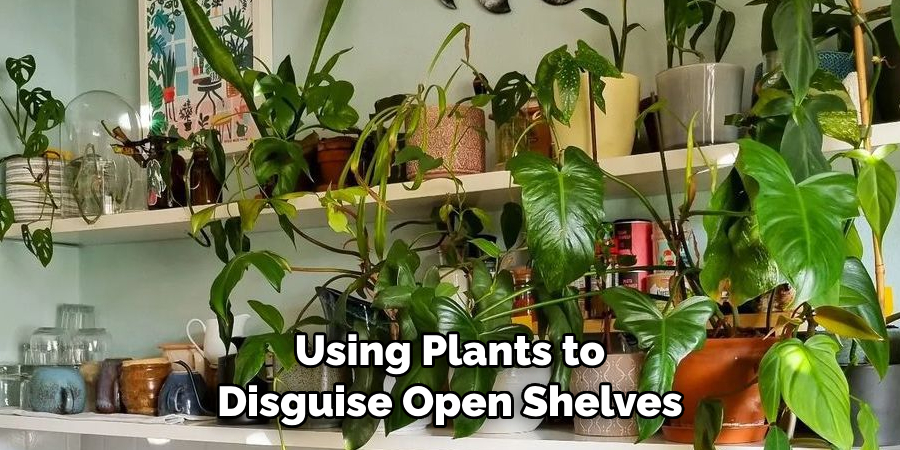
To arrange decorative items effectively, vary their heights and shapes, layering them with plants to form a dynamic display. Placing a sculpture next to a trailing plant, for example, creates a balance between organic shapes and structured objects. Art pieces can be leaned against the walls behind shelves to ground the display and provide a colorful backdrop.
When styling open shelves, the goal is to create a cohesive look that feels intentional and curated. By blending plant life with decorative objects strategically, you can transform open shelves into an artful arrangement that both disguises clutter and enhances the room’s ambiance. This combination of natural elements and artistic decor not only defines the shelving space but also enriches the overall visual and tactile experience of the room.
Conclusion
Hiding or disguising open shelves presents numerous advantages, transforming cluttered spaces into visually appealing organized areas. Embracing strategies like custom cabinetry, decorative boxes, and plant integration provide storage solutions and opportunities for creative expression. These methods enhance the aesthetics of a room, generating a sense of order and sophistication tailored to each homeowner’s taste.
Exploring diverse approaches allows for personalization and ensures the best fit for individual styles and needs. From blending choices that echo modern minimalism to more bohemian and eclectic vibes, the versatility of these techniques is unmatched. Ultimately, learning how to hide open shelves effectively combines creativity with practicality, inspiring innovative uses of space while maintaining functionality. By integrating these methods, you can rejuvenate your shelving, making it an integral and harmonious part of your home’s decor.

